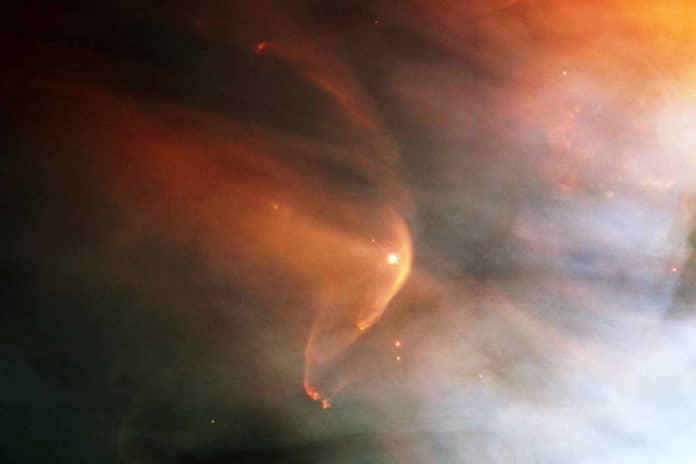Collisionless shocks are ubiquitous in the Universe as a consequence of supersonic plasma flows sweeping through interstellar and intergalactic media. These shocks cause many observed astrophysical phenomena, but details of shock structure and behavior remain controversial because of the lack of ways to study them experimentally.
In a new experiment, MIT scientists along with an international team of colleagues have created such conditions of these collisionless shocks in the laboratory, allowing for detailed study of the processes taking place within these giant cosmic smashups.
Immense interstellar events where billows of charged matter hurtle into one another and heave high-energy particles. Scientists, in this experiment, have been able to produce Immense interstellar events where billows of charged matter hurtle into one another such particles in the lab with high fidelity.
Scientists generated a jet of low-density plasma using a set of six powerful laser beams, at the OMEGA laser facility at the University of Rochester, and aiming it at a thin-walled polyimide plastic bag filled with low-density hydrogen gas.
The outcomes recreated many of the detailed instabilities observed in deep space, along these lines affirming that the conditions coordinate firmly enough to allow for comprehensive, close-up study of these elusive wonders. An amount called the mean freeway of the plasma particles was estimated as being a lot more noteworthy than the widths of the shock waves.
At the boundary of the lab-generated collisionless shock, the density of the plasma spiked dramatically. Scientists also measured the detailed effects on both the upstream and downstream sides of the shock front, allowing them to begin to differentiate the mechanisms involved in the transfer of energy between the two clouds, something that physicists have spent years trying to figure out.
MIT Plasma Science and Fusion Center Senior Research Scientist Chikang Li said, “The results are consistent with one set of predictions based on something called the Fermi mechanism, but further experiments will be needed to rule out some other mechanisms that have been proposed definitively.”
“For the first time, we were able to directly measure the structure of important parts of the collisionless shock. People have been pursuing this for several decades.”
The study also demonstrated that how much energy is transferred to particles that pass through the shock boundary, which accelerates them to speeds that are a significant fraction of the speed of light, producing what is known as cosmic rays.
Li said, “A better understanding of this mechanism “was the goal of this experiment, and that’s what we measured, noting that they captured a full spectrum of the energies of the electrons accelerated by the shock.”
Mark Koepke, a professor of physics at West Virginia University and chair of the Omega Laser Facility User Group, who was not involved in the study said, “This report is the latest installment in a transformative series of experiments, annually reported since 2015, to emulate an actual astrophysical shock wave for comparison with space observations. Computer simulations, space observations, and these experiments reinforce the physics interpretations that are advancing our understanding of the particle acceleration mechanisms in play in high-energy-density cosmic events such as gamma-ray-burst-induced outflows of relativistic plasma.”
The new findings are described in the journal Physical Review Letters.
